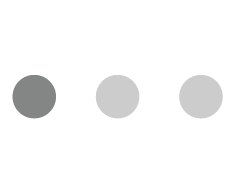Indian technology companies are leading InsurTech innovations and 6 firms have successfully secured a spot in the InsurTech100. FinTech Global’s InsurTech100 is an annual list of tech-startups- transforming the digital insurance landscape through innovative products and solutions. These top 100 InsurTechs are recognized by a panel of analysts and industry stalwarts from an exhaustive list of over 1000 technology firms, who are solving the most-pressing insurance challenges. Here are the InsurTech Companies in India who are pioneering the Global InsurTech revolution.
Acko
Acko is India’s first fully-digital general insurance company. Founded in 2017, it provides personalized pricing to customers through deep-data analytics. It studies customers’ interaction patterns and behaviours and accordingly suggests insurance products.
Currently, Acko has insured over 40 million Indians, acquiring 8% of the car insurance policies bought online in India. It also introduced Ola Ride Insurance for lost baggage, laptops, missed flights, accidental medical expenses, and ambulance transportation cover.
Artivatic
Artivatic provides an insurance SaaS platform to automate buyer onboarding, profiling, underwriting, and claims administration. Their solutions leverage cutting-edge technologies like NLP, ML, Deep Learning, Behavior Analysis, AI, and IoT.
Currently, the company is working with 16 clients which include Deloitte, KPMC, HCL, and Cynopia, among others.
Mantra Labs
Mantra Labs is an AI-first product & solutions firm solving the most pressing front & back-office challenges faced by Insurance carriers. Their product portfolio includes — FlowMagic, a visual-AI platform for insurer workflows; an AI-enabled chatbot for insurance; and an AI-driven lead conversion accelerator that maximizes opportunities from the sales funnel.
One of the oldest InsurTech companies in India, Mantra Labs has worked with leading insurers like Religare, DHFL Pramerica, Aditya Birla Health, and AIA Hongkong along with unicorn Internet startups like Ola, Myntra and Quikr. Mantra Labs also has strategic technology partnerships with MongoDB, IBM Watson, and Nvidia.
Pentation Analytics
Pentation Analytics provides state-of-the-art analytics applications targeting core insurance use cases. The company has introduced ‘Insurance Analytics Suite®’ which addresses retention/persistence, cross-sell, acquisition, and underwriting through advanced machine learning models. The product is adaptable to both cloud and on-premise applications.
Pentation Analytics is partners with international technology companies like Hewlett Packard Enterprise, HortonWorks, Hitachi, among others.
PolicyBazaar
PolicyBazaar is India’s largest insurance marketplace. It allows users to view and compare different insurance policies online based on their preferences. Users can also buy, sell, and store policies online. The platform provides an end-to-end solution to track policies and claims assistance. The company hosts over 100 million visitors annually and records nearly 1,000,000 sales transactions/month. Currently, PolicyBazaar accounts for nearly 32% of India’s life cover & retail health business collectively.
The company has support from an array of meticulous investors like SoftBank, InfoEdge (Naukri.com), Temasek, Tiger Global Management, True North, and Premji Invest.
Toffee Insurance
Toffee Insurance is a new-age contextual microinsurance products firm. It’s customer-centric products deconstruct traditional underwriting and pack relevant policies according to individual requirements. The company is distributing plans through different channels like APIs, mobile, and SMS transactions. Their current portfolio includes cycle insurance, income protection insurance, daily commute insurance, and dengue insurance catering to individuals with monthly income less than USD 300.
The company has succeeded in issuing policies to 115K+ Indians, of which 80% are first-time buyers. Currently, Toffee Insurance is partners with Hero Cycles, Wildcraft, Eko, and Apollo Hospitals and is backed by ICICI Prudential, Religare, HDFC Ergo, and Tata AIG Insurance among many others.
Changing market dynamics has brought a radical shift within the insurance industry. AI-driven technologies are making subtle changes to the way millennials and younger generations are thinking about Insurance as an immediate need. Insurtech is well poised above all else, to satisfy even the most unique coverage needs, removing traditional challenges like ownership from the mix.
With the growing popularity of digital channels, customers prefer self-service portals for quick access and instant solutions for their ever-changing financial and protection needs. Also, customers are now more aware of the potential threats than ever before and expect relevant products from insurers. “25% of business customers and fewer than 15% of retail policyholders believe they are covered comprehensively against emerging risks”(according to the World InsurTech Report 2019); indicating a rising need for consumer-centric and innovative insurance solutions to meet the new demand.
[Related: 10 Takeaways from the World InsurTech Report 2019]
In the year 2018, the InsurTech100 was secured by 7 InsurTech companies in India — Acko, Arvi, CoverFox, GramCover, PolicyBazaar, PolicyX, and Toffee Insurance as innovative InsurTechs.
Knowledge thats worth delivered in your inbox







